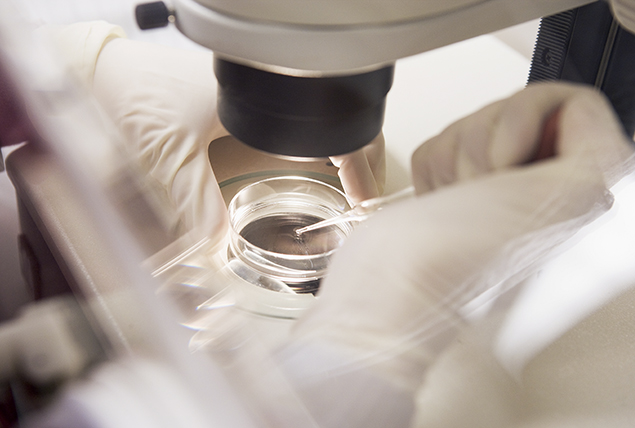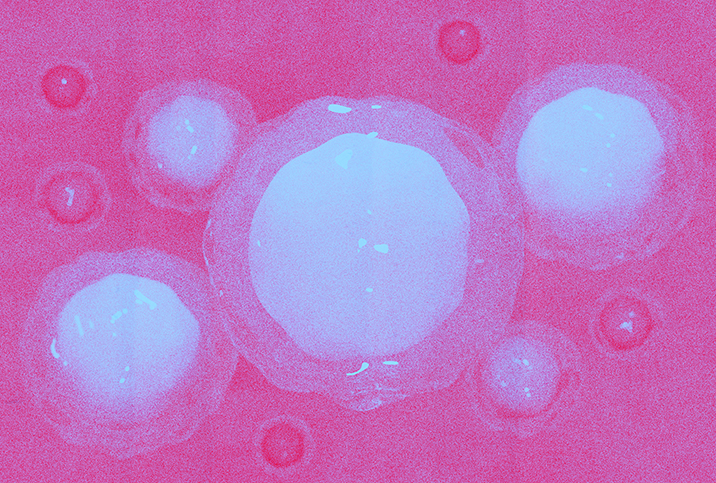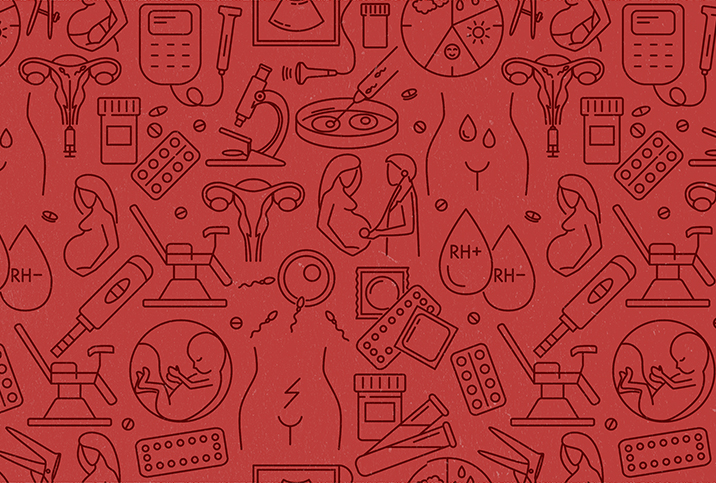How Do I Know When to Turn to Assisted Reproductive Technology?

Assisted reproductive technology (ART) has been successfully in use since the 1970s. In the nearly 50 years of ART's existence, millions of families have had children despite their fertility struggles.
When people think of assisted reproductive technology, they're likely thinking about its most common procedure: in vitro fertilization (IVF). It goes beyond that, however. ART is a rather comprehensive category, broadly defined as a medical intervention used to address infertility.
Beyond IVF, ART encompasses procedures such as intrauterine insemination (IUI), intracytoplasmic sperm injection (ICSI), frozen embryo transfer (FET), intrafallopian transfer and ovulation induction. These procedures differ but all aim to accomplish the same goal: a successful pregnancy and birth.
ART as an answer to infertility
The struggle to conceive can cause feelings of hopelessness for some partners. Thanks to modern technology, families can overcome it with a little bit of help. Infertility is defined as not being able to get pregnant after one full year of trying—or six months if the woman is older than 35—and is a more common diagnosis than you might think.
In the United States, 10 percent to 15 percent of couples struggle with infertility, and those numbers are expected to rise.
"The American Society for Reproductive Medicine [ASRM] estimates that by 2025, almost 10 million couples will encounter problems having a baby, and approximately 20 percent will rely on IVF over the next two decades," said Karenne Fru, M.D., Ph.D., a fertility specialist with Oma Fertility in Atlanta.
Infertility can be caused by a number of factors, but many couples have no idea they are infertile until they try to get pregnant. When conception doesn't happen naturally, they can turn to assisted reproductive technology for help.
A quick history of ART
The history of ART started in the 1850s with surgeon J. Marion Sims, a controversial figure in American history. Sims is often credited as the father of modern gynecology, but he made advancements in women's reproductive health by experimenting on enslaved Black women.
Sims was the first reported doctor to ever artificially inseminate a woman. He injected six women with their husbands' semen. After 55 attempts, he was able to facilitate one pregnancy that ended in a miscarriage. The first successful insemination pregnancy occurred in 1884 when Philadelphia physician William Pancoast inseminated a woman—without her consent or knowledge—and she gave birth to a healthy baby nine months later.
In 1934, Gregory Pincus, a scientist at Harvard University, began experimenting with IVF in rabbits. While he was denounced for his work at the time, his experiments suggested that IVF was possible in humans—a possibility that would become reality only 10 years later.
The next major achievement in ART came in 1944, when John Rock, M.D., and his lab assistant Miriam Menkin fertilized the first human egg in a lab.
During the next 30 years, doctors would unsuccessfully attempt to implant fertilized eggs inside women. Then, in 1978, Louise Joy Brown, the world's first "test tube baby," was born in an English hospital.
Soon after the birth, IVF technology jumped the pond, and the first American ART baby was born in 1981. Since that time, more than 9 million babies worldwide have been born with the assistance of ART.
When should you consider ART?
Assisted reproductive technology has made significant gains in recent years. More partners are becoming aware of the possibilities of starting a family with a little help. For some hopeful parents, though, it can be difficult to know when to seek help from a fertility specialist.
That time frame depends on your age, according to Dana McQueen, M.D., a reproductive endocrinologist with Reproductive Medicine Associates in San Francisco. Consider a fertility workup if you've been trying to conceive for more than six months and are 35 or older. For couples younger than 35, the window is 12 months.
"In addition, anyone with irregular cycles or absent menstrual cycles will want to see a fertility doctor sooner than the six- and 12-month time points," she said. "Some women will be referred by their OB-GYN, but many will make an appointment with a fertility doctor on their own after having difficulty getting pregnant."
Once you make an appointment with a fertility specialist, they can determine the cause of the infertility and create a treatment plan specific to your situation. Depending on the situation, your specialist may suggest less invasive options, such as ovulation induction with timed intercourse or artificial insemination, before trying IVF, Fru explained.
"A fertility expert may bring this option [ART] up when infertility has been diagnosed, the cause identified and they are not able to be addressed any other way," she added.
Why might a couple need ART?
There are many reasons someone would need the assistance of IVF. Lora Shahine, M.D., a reproductive endocrinologist at Pacific NW Fertility in Seattle and host of the "Baby or Bust" podcast, said IVF may be recommended for individuals or couples who are struggling with infertility due to:
- Blocked or damaged fallopian tubes
- Low sperm count or motility (movement)
- Ovulation disorders
- Unexplained infertility
"IVF may also be used for individuals or couples who have a genetic condition that they do not want to pass on to their offspring, or for same-sex couples or single individuals who wish to have a biological child," Shahine added. "Additionally, IVF may be recommended for individuals undergoing fertility preservation due to medical conditions or treatments that may impact their fertility, such as chemotherapy or radiation therapy."
The decision to start fertility treatments is completely up to you and your family. IVF and other types of ART can be incredibly expensive, and funding the procedures can be challenging. Beyond the expenses, fertility treatments can be physically and emotionally difficult for some people, so taking care of yourself while using ART is paramount.
Facts about ART
The world of assisted reproductive technology is vast and ever-progressing as technology grows and the medical community's understanding of reproductive systems increases.
The following are some of the must-know facts about ART:
- The first IVF baby was born in 1978.
- The first IVF clinic was opened in 1980 at Eastern Virginia Medical School. Six other clinics opened by 1982.
- In 2020, (the most recent data), more than 91,000 babies were born using ART.
- Approximately 10 percent to 15 percent of couples struggle with infertility.
- About 20 percent of ART-conceived babies are twins.
- More than 99 percent of ART procedures are IVF.
- More than 9 million babies have been born worldwide with the help of assisted reproductive technology.
Assisted reproductive technology can be life-changing for families unable to conceive naturally. If you have been trying to get pregnant with no success, it may be time to talk to your doctor about starting fertility testing to uncover the cause and formulate the best treatment plan for your situation.
"ART has enabled millions of people worldwide to have children and build families, and it continues to evolve with advances in technology and medical research," Shahine said.


















